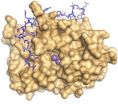(Press-News.org) People's racial prejudices are influenced by where they live, reports a new study led by Oxford University psychologists.
The researchers found that levels of racial prejudice among white people drop significantly when they live in ethnically mixed communities, even when they do not have direct contact with minorities. Simply seeing white strangers interacting positively with ethnic minorities is enough to reduce racial prejudice.
The researchers have called this positive effect 'passive tolerance', likening it to the negative effect of 'passive smoking' where a smoky environment can increase your risk of lung cancer, even if you do not smoke yourself.
Using survey data from seven studies conducted between 2002 and 2011 across England, Europe, the USA and South Africa, the team investigated people's attitudes towards different ethnic groups. The results, published this week in Proceedings of the National Academy of Sciences, show that even prejudiced people who avoid contact with other groups become less prejudiced when they live in areas where different ethnicities mix.
'We have shown that positive contact between people belonging to different ethnic groups leads to more tolerant societies overall,' said Professor Miles Hewstone of Oxford University's Department of Experimental Psychology, senior author of the study and Director of the Oxford Centre for the Study of Intergroup Conflict. 'Astonishingly, we don't just see reduced prejudice among people who have direct contact with ethnic minorities. It isn't even confined to those whose friends have contact with minorities. Simply living in a neighbourhood where other people are mixing with minorities is enough to reduce racial prejudice.'
To rule out the possibility that more tolerant people simply choose to live in more diverse areas, two of the seven studies were conducted over several years to see how attitudes changed over time. They showed that even the most prejudiced people who did not mix at all with ethnic minorities became more tolerant over time when they lived in areas where others were mixing.
'If two white people with identical views went to live in different postcodes for a year, the person in the neighbourhood with more mixing between ethnic groups would likely leave more tolerant,' said Professor Hewstone, 'We would see this effect even if they never personally spoke to people from other ethnicities. The size of this "passive tolerance" effect on people's prejudice is of the same order as the effect of passive smoking on lung cancer risk.'
As part of the wider analysis, the team surveyed 1,056 German nationals from 50 districts in Germany, each with a different proportion of ethnic minority residents. These respondents all completed surveys in both spring 2010 and 2011 to monitor changes in attitude and behaviour. This work was led by Dr Oliver Christ of Philipps-University Marburg and the University of Hagen, lead author of the study.
German nationals taking part in the survey were asked how many of their friends were foreigners, how often they spoke to foreigners and how often foreigners helped them out. Prejudice was assessed by asking participants how much they agreed with statements suggesting that there are too many foreigners in Germany, that foreigners burden the social security system and that foreigners should be deported if jobs become scarce.
'Our results clearly show that districts with the most mixing between ethnic groups lead to the highest reductions in racial prejudice,' said Professor Hewstone. 'Although our recent longitudinal studies were conducted in Germany, there is no reason to believe that these effects would not be the same across the world. The cross-sectional studies conducted in England, the USA, and South Africa certainly support this idea.
'Governments should do more to encourage different groups to mix with each other, as we now know that this reduces prejudice not just in individuals but throughout entire neighbourhoods. Social interventions that aim to increase contact between groups will help to establish more tolerant social norms in society. In the long run, this should lead to more harmonious neighbourhoods.'
INFORMATION:
The research was funded by the Leverhulme Trust, the German Research Foundation, and the Max-Planck Society.
Postcode lottery for race relations
2014-03-03
ELSE PRESS RELEASES FROM THIS DATE:
Increasing homogeneity of world food supplies warns of serious implications for farming and nutrition
2014-03-03
CALI, COLOMBIA (3 MARCH 2014)—A comprehensive new study of global food supplies confirms and thoroughly documents for the first time what experts have long suspected: over the last five decades, human diets around the world have grown ever more similar—by a global average of 36 percent—and the trend shows no signs of slowing, with major consequences for human nutrition and global food security.
"More people are consuming more calories, protein and fat, and they rely increasingly on a short list of major food crops, like wheat, maize and soybean, along with meat and dairy ...
The surface of the sea is a sink for nitrogen oxides at night
2014-03-03
The surface of the sea takes up nitrogen oxides that build up in polluted air at night, new measurements on the coast of southern California have shown. The ocean removes about 15 percent of these chemicals overnight along the coast, a team of atmospheric chemists reports in the early online edition of the Proceedings of the National Academy of Sciences the week of March 3.
Nitrogen oxides, formed by the burning of fossil fuels, generate photochemical smog. Atmospheric chemists would like to account for the fates of these molecules in a kind of budget that indentifies ...
Amazon's canopy chemistry is a patchwork quilt
2014-03-03
Washington, D.C.— In many ways, plants act as chemical factories, using energy from sunlight to produce carbon-based energy and taking nutrients from the soil in order to synthesize a wide variety of products. Carnegie scientists asked the question: How much does the portfolio of chemicals generated by plants vary, depending on the surrounding environment, and what can this tell us about how we interact with forests? The answer involved climbing into the Amazonian canopy, resulting in the discovery that the forest's chemical portfolios form a rich mosaic that varies with ...
We want to save water, but do we know how?
2014-03-03
BLOOMINGTON, Ind. -- Many Americans are confused about the best ways to conserve water and have a slippery grasp on how much water different activities use, according to a national online survey conducted by an Indiana University researcher.
Experts say the best strategy for conserving water is to focus on efficiency improvements such as replacing toilets and retrofitting washing machines. However, the largest group of the participants, nearly 43 percent, cited taking shorter showers, which does save water but may not be the most effective action. Very few participants ...
Experimental stroke drug also shows promise for people with Lou Gehrig's disease
2014-03-03
Keck School of Medicine of USC neuroscientists have unlocked a piece of the puzzle in the fight against Lou Gehrig's disease, a debilitating neurological disorder that robs people of their motor skills. Their findings appear in the March 3, 2014, online edition of the Proceedings of the National Academy of Sciences of the United States of America, the official scientific journal of the U.S. National Academy of Sciences.
"We know that both people and transgenic rodents afflicted with this disease develop spontaneous breakdown of the blood-spinal cord barrier, but how these ...
Big stride in understanding PP1, the ubiquitous enzyme
2014-03-03
PROVIDENCE, R.I. [Brown University] — In the Proceedings of the National Academy of Sciences, a team of scientists at Brown University reports a major step forward in determining the specific behavior of the ubiquitous enzyme PP1 implicated in a wide range of diseases including cancer.
PP1, whose role is to enable the passage of molecular messages among cells, is found pretty much everywhere in the body. Its wide range of responsibilities means it is essential to many healthy functions and, when things go wrong, to diseases. But its very versatility has prevented it from ...
Mount Sinai study points to new biological mechanisms, treatment paradigm for kidney disease
2014-03-03
New York, NY – Prevention and reversal of chronic kidney disease is an urgent public health need. The disease affects 1 in 10 Americans, is debilitating and deadly, and existing drugs, at best, offer only mild delay in progression to end-stage kidney failure. New research led by Icahn School of Medicine at Mount Sinai investigators has uncovered abnormal molecular signaling pathways from disease initiation to irreversible kidney damage, kidney failure, and death. Results from their preclinical and human research are published online March 3 in the Journal of Clinical Investigation.
"Our ...
Researchers identify 'carbohydrates in a coal mine' for cancer detection
2014-03-03
Researchers at New York University and the University of Texas at Austin have discovered that carbohydrates serve as identifiers for cancer cells. Their findings, which appear in the journal Proceedings of the National Academy of Sciences, show how these molecules may serve as signals for cancer and explain what's going on inside these cells, pointing to new ways in which sugars function as a looking glass into the workings of their underlying structures.
"Carbohydrates can tell us a lot about what's going on inside of a cell, so they are potentially good markers for ...
New discovery solves problem of anti-inflammatory substance
2014-03-03
There have been great expectations regarding the production of a drug to block the enzyme LTA4 hydrolase, which plays a key role in the body's inflammatory response. However, in clinical trials, such molecules have proven to be only moderately effective. Now, researchers at Karolinska Institutet have successfully refined their understanding of why previous substances have been less effective – and in so doing have produced a molecule that gets around the problem. Consequently, there is once again hope of a new anti-inflammatory drug based on the principal of blocking LTA4 ...
Large mammals were the architects in prehistoric ecosystems
2014-03-03
Researchers from Denmark demonstrate in a study that the large grazers and browsers of the past created a mosaic of varied landscapes consisting of closed and semi-closed forests and parkland. The study will be published on Monday 3 March 2014 in the renowned journal PNAS (Proceedings of the National Academy of Sciences of the United States of America).
Dung beetles recount the nature of the past
The biologists behind the new research findings synthesized decades of studies on fossil beetles, focusing on beetles associated with the dung of large animals in the past ...






